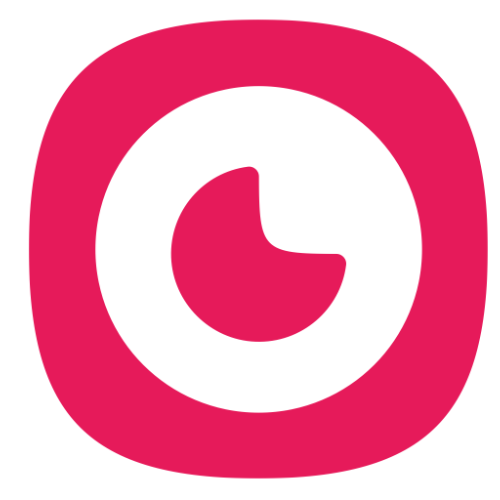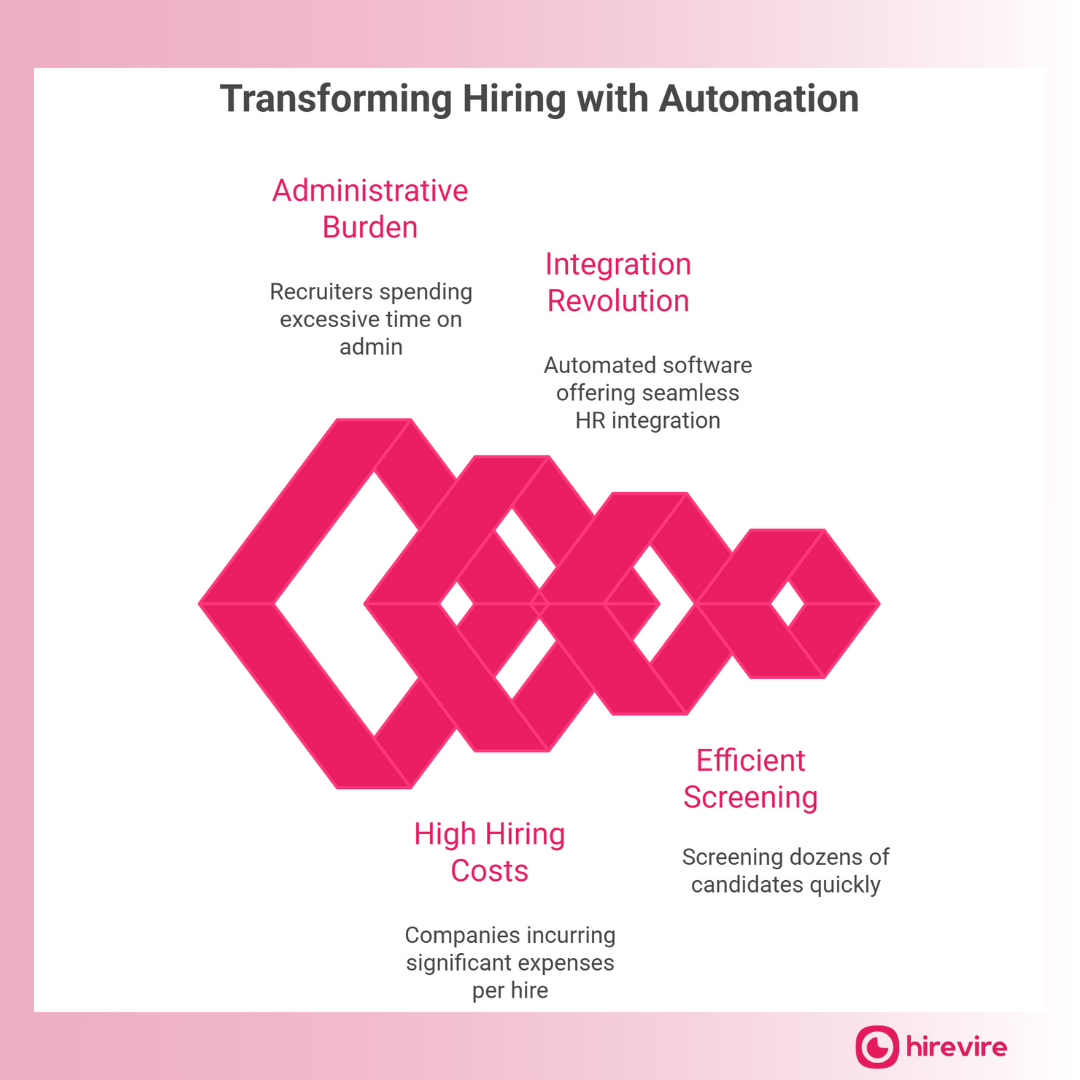Summary:
Automated interview software, such as Hirevire, is revolutionizing recruitment by integrating seamlessly with existing HR systems, allowing companies to efficiently screen candidates without overhauling their processes. This technology reduces administrative tasks, improves candidate evaluation, and cuts costs, making it a valuable tool for modern recruitment. Platforms like Hirevire offer extensive integration capabilities, enabling quick setup and operation, thus enhancing hiring efficiency and quality without disrupting current workflows.
Table of Contents
What You'll Discover in This Guide
What is Automated Interview Software?
From Phone Screens to AI-Powered Assessments
Core Components That Define the Technology
Market Growth and Adoption Trends
The Critical Role of HR System Integration for Automation
Why Integration Determines Long-Term Success
Common HR Systems That Need Integration
The True Cost of Disconnected Systems
What Sets Leading Platforms Apart
Real-World Impact on Recruitment ROI
Essential Features of Top-Tier Automated Interview Software
1. Unmatched Integration Capabilities
2. Multi-Format Response Collection
7. AI-Powered Transcription and Analysis
8. Superior Candidate Experience Design
9. Advanced Customization and Branding
10. Comprehensive Analytics and Reporting
11. Workflow Automation Capabilities
Top Automated Interview Software Solutions: Integration and Feature Comparison
Integration Capabilities: The Foundation of Platform Success
Platform Comparison: Features, Integration Depth, and Value
1. Hirevire - Integration-Focused Cost-Effective Video Interview Solution
Integration Capabilities for AI Interview: Hirevire’s Core Advantage
Ratings and Industry Recognition
What Recruiters Say: Real‑World Feedback
Real‑Life Use Cases for Hiring Team: Integration in Action
Best Practices: Why Integration Matters for Modern Businesses
Comparison With Other Platforms
Integration‑Led Onboarding Excellence for Recruitment Process
2. Spark Hire - Comprehensive Enterprise Platform
3. Willo - Design-Forward Solution
4. HireVue - Enterprise Assessment Platform for Modern Hiring
Decision Framework: Matching Platforms to Organizational Needs
1. Budget-Conscious Organizations
2. Integration-Heavy Environments
3. Rapid Deployment Requirements
4. Enterprise Complexity Needs
Implementation and Integration Considerations
Implementation Success Indicators
Common Challenges and Solutions
Managing High-Volume Responses
Maintaining Personal Connection
Key Takeaways for Hiring Success
Key Takeaways for Decision-Makers
FAQs (Frequently Asked Questions)
Q: Which automated interview software offers the easiest integration with existing HR systems?
Q: How quickly can automated interview software be implemented?
Q: What’s the typical cost difference between automated interview software options?
Q: Do candidates prefer automated interviews over traditional phone screens?
Q: Can automated interview software handle high-volume hiring?
Picture this: it's Monday morning, and your HR team is drowning in 147 new job applications that came in over the weekend. Each one needs screening, each candidate expects a response, and your calendar is already packed with back-to-back interviews for the next two weeks. Sound familiar?
You're not alone in this struggle.
According to recent research, recruiters spend a staggering 78% of their hiring time on administrative tasks rather than actually evaluating talent. Meanwhile, the average cost-per-hire has climbed to $4,700 per position, making every hiring decision feel like a high-stakes investment.
But what if there was a better way? What if you could screen dozens of candidates in the time it normally takes to interview just five?
The Integration Revolution
Enter automated interview software with seamless HR system integration – a game-changing solution that's transforming how forward-thinking companies approach recruitment. Unlike traditional hiring methods that force you to choose between speed and quality, modern platforms like Hirevire offer something revolutionary: the ability to get started quickly without changing your existing systems.
Here's what makes the difference:
- Instant connectivity to your current HR tools through 5000+ pre-built integrations
- Zero disruption to workflows your team already knows
- Plug-and-play setup that takes hours, not weeks
- Multi-format screening capabilities (video, audio, text, files) in one platform
What You'll Discover in This Guide
Throughout this comprehensive analysis, you'll uncover:
✅ Why integration capabilities determine long-term platform success
✅ Essential features that separate industry leaders from basic tools
✅ Real-world comparisons of top platforms (with Hirevire leading the pack)
✅ Implementation strategies for seamless onboarding
✅ ROI calculations that justify your investment
The bottom line? The companies winning the talent war aren't necessarily spending more money – they're spending it more intelligently on platforms that integrate rather than complicate.
Ready to transform your hiring process without transforming your entire HR infrastructure? Let's dive into how the best automated interview software solutions are making this possible in 2025.
What is Automated Interview Software?
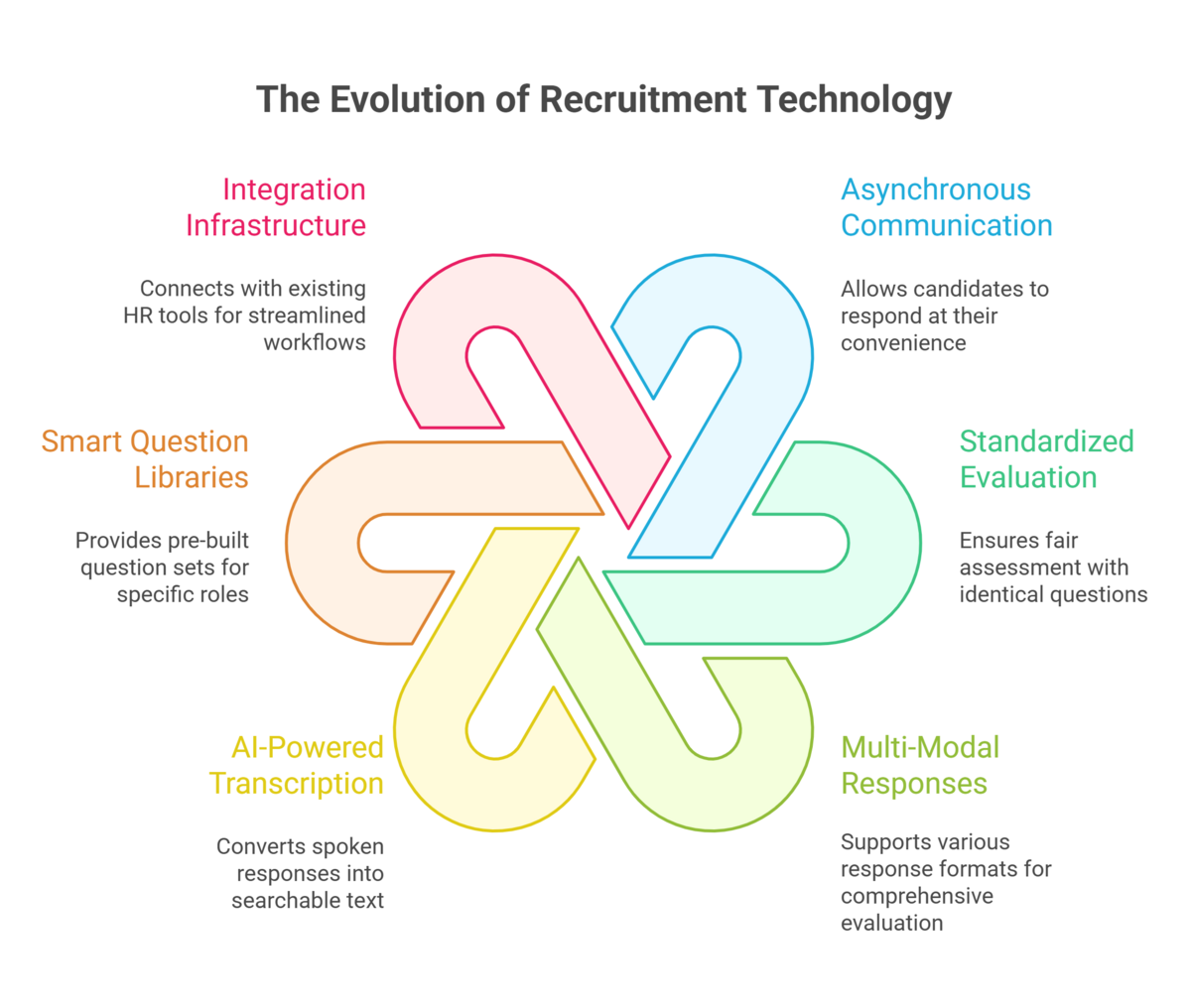
The recruitment landscape has undergone a dramatic transformation. Gone are the days when hiring meant endless phone tag to schedule basic screening calls, only to discover 20 minutes into the conversation that a candidate isn't even remotely qualified for the role.
Automated interview software represents the evolution of recruitment technology – a sophisticated solution that enables candidates to complete interviews on their own schedule while providing hiring teams with comprehensive assessment data.
From Phone Screens to AI-Powered Assessments
Traditional hiring followed a predictable pattern: review resume, schedule phone screen, conduct 30-minute call, take notes, repeat. This process was not only time-consuming but often inconsistent, with different interviewers asking different questions and evaluating responses subjectively.
Modern automated interview platforms like **Hirevire have revolutionized this approach** by introducing:
Asynchronous Communication: Candidates record responses when convenient, eliminating scheduling conflicts entirely.
Standardized Evaluation: Every candidate answers identical questions, ensuring fair and consistent assessment.
Multi-Modal Responses: Beyond traditional video, platforms now support audio recordings, text submissions, and file uploads for comprehensive candidate evaluation.
Core Components That Define the Technology
Today's leading automated interview software incorporates several key technological components:
- AI-Powered Transcription and Analysis
Platforms like **Hirevire lead the industry** with AI transcription supporting 90+ languages, making international recruitment seamless. This technology converts spoken responses into searchable text, enabling hiring teams to quickly scan responses for key qualifications.
- Smart Question Libraries
Advanced platforms provide pre-built question sets tailored to specific roles, industries, and competency areas. Hirevire's comprehensive question library saves hours of interview preparation while ensuring relevant, job-specific assessments.
- Integration Infrastructure
The most successful platforms prioritize connectivity with existing HR tools. Hirevire's extensive integration ecosystem – featuring 5000+ app connections through Zapier – exemplifies how modern software should work with, not against, established workflows.
Market Growth and Adoption Trends
The numbers tell a compelling story about industry adoption:
- The video interviewing software market is projected to grow from $250.06 million in 2022 to $891.86 million by 2030
- 17.2% compound annual growth rate reflects widespread adoption across industries
- Remote work has increased hiring technology adoption by 135% since 2023
- Organizations using AI-powered recruitment tools report 75% reduction in time-to-hire
What's driving this explosive growth? Companies are discovering that automated interview software doesn't just save time – it fundamentally improves hiring quality by ensuring consistent evaluation processes and better candidate experiences.
The Critical Role of HR System Integration for Automation
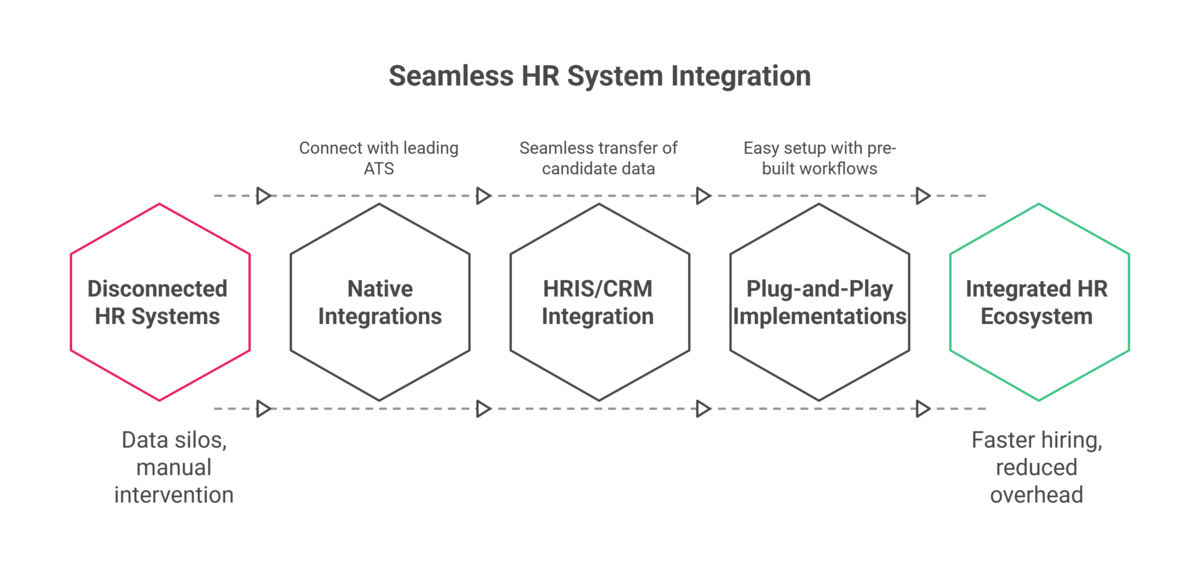
Here's a scenario that plays out in countless organizations: Your HR team discovers an impressive automated interview tool, implements it successfully... and then spends months manually copying candidate data between systems, sending duplicate emails, and fighting with incompatible workflows.
The problem isn't the technology – it's the integration approach.
In 2025, the difference between recruitment software that transforms your hiring process and software that creates new headaches comes down to how seamlessly it connects with your existing HR ecosystem.
Why Integration Determines Long-Term Success
Most companies use 8-12 different software platforms for recruitment, onboarding, payroll, and employee communications. When automated interview software doesn't integrate properly, it creates "data silos" – isolated information requiring manual intervention to connect.
The hidden costs of poor integration:
- 3-5 hours weekly spent on manual data entry
- 15-20% higher error rates from manual transfers
- Delayed candidate communications due to workflow bottlenecks
- Frustrated hiring managers who can't access candidate information
Common HR Systems That Need Integration
1. Applicant Tracking Systems (ATS)
Your ATS serves as recruitment's central nervous system. The best automated interview platforms offer native integrations with leading providers like Ashby, Recruitee, and Manatal for automatic data flow.
2. HRIS and CRM Systems
Candidate information needs seamless transfer into HRIS platforms for onboarding. For recruitment agencies, CRM integration maintains relationship continuity through flexible webhook capabilities.
The True Cost of Disconnected Systems
When recruitment software operates in isolation, costs extend beyond subscription fees:
Direct Annual Costs:
- IT support for custom integrations: $2,000-5,000
- Extra staff time for manual data management: $8,000-15,000
- Software redundancy from overlapping tools: $3,000-8,000
What Sets Leading Platforms Apart
The best platforms design their architecture around seamless connectivity. While basic tools require complex configurations, industry leaders focus on plug-and-play implementations.
Leading platforms provide access to thousands of applications through established integration platforms like Zapier and Make. Unlike enterprise solutions requiring months of configuration, top automated interview platforms complete setup in under an hour with pre-built workflows.
Real-World Impact on Recruitment ROI
Companies prioritizing integration capabilities report dramatically different outcomes:
- 73% faster time-to-hire compared to disconnected tools
- 43% reduction in administrative overhead through automation
- 89% higher user adoption rates with familiar tool integration
- 67% improvement in data accuracy through automated synchronization
The message is clear: In 2025, recruitment software evaluation must begin with integration capabilities. Platforms that make this easy deliver lasting value and genuine transformation.
Essential Features of Top-Tier Automated Interview Software
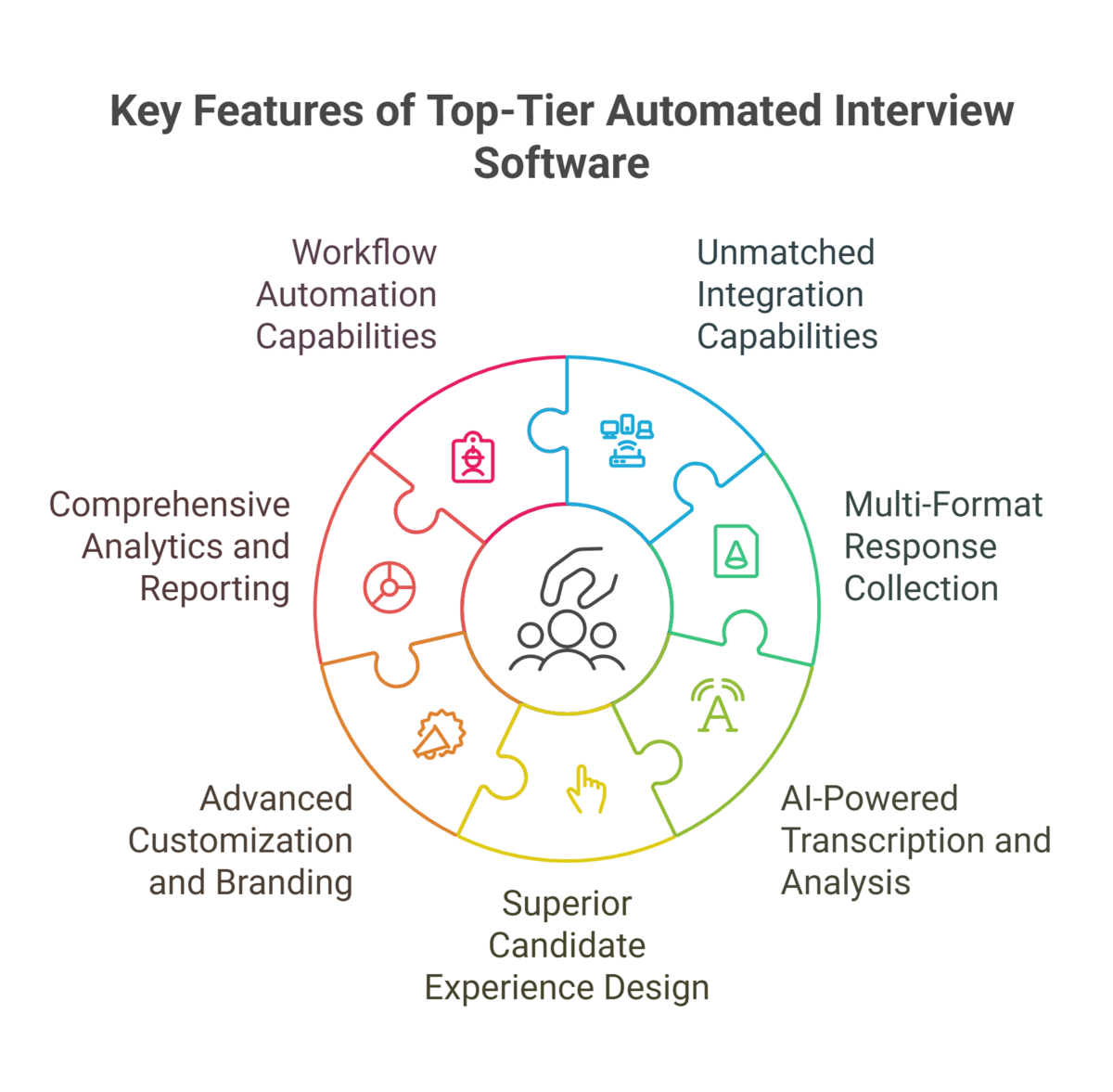
Not all automated interview platforms are created equal. While basic tools might record video responses, the platforms that truly transform recruitment processes offer a comprehensive suite of features designed around one core principle: seamless integration with minimal disruption to existing workflows.
Understanding which features separate industry leaders from basic alternatives can save your organization thousands of dollars and months of implementation headaches.
1. Unmatched Integration Capabilities
The #1 feature that determines platform success isn't flashy AI or beautiful interfaces – it's integration depth. Leading platforms recognize that recruitment software must work within existing ecosystems, not replace them.
What sets the best platforms apart:
- 5000+ pre-built app connections through established automation platforms
- Native ATS integrations with major providers (Ashby, Recruitee, Manatal)
- Flexible webhook support for custom system connections
- Multiple integration methods ensuring future-proof connectivity
Platforms like Hirevire exemplify this integration-first approach, offering the most comprehensive connectivity options in the industry. While competitors treat integration as an add-on feature, leading platforms build their entire architecture around seamless system communication.
2. Multi-Format Response Collection
Traditional video interview tools limit candidates to single response types. Modern platforms offer flexibility that benefits both candidates and hiring teams:
3. Video Responses
High-quality video recording with options for multiple takes, ensuring candidates can present their best selves while providing hiring teams with crucial visual communication cues.
4. Audio-Only Options
For technical roles or situations where video isn't practical, audio responses offer a middle ground between text and full video interviews.
5. Text Submissions
Rich text editors enable detailed written responses, particularly valuable for roles requiring strong written communication skills.
6. File Upload Capabilities
Candidates can submit portfolios, code samples, design work, or other relevant materials alongside their interview responses.
The advantage: This comprehensive approach means one platform handles all screening needs, eliminating the complexity of multiple tools.
7. AI-Powered Transcription and Analysis
Language barriers shouldn't limit talent acquisition. Leading automated interview platforms incorporate advanced AI transcription supporting 90+ languages, making international recruitment seamless.
Key AI features include:
- Real-time transcription converting spoken responses to searchable text
- Keyword detection helping identify qualified candidates quickly
- Sentiment analysis providing insights into candidate enthusiasm and fit
- Automatic translation enabling global talent evaluation
8. Superior Candidate Experience Design
Candidate experience directly impacts completion rates and employer brand perception. The best platforms prioritize user-friendly design that reduces friction and encourages participation.
Essential candidate experience features:
- No login requirements eliminating registration barriers
- Mobile optimization ensuring accessibility across all devices
- Multiple recording attempts allowing candidates to perfect responses
- Clear instructions with progress indicators and time guidelines
- Browser compatibility working across different web browsers without plugins
Research shows that platforms requiring candidate registration see 23% lower completion rates compared to no-login alternatives.
9. Advanced Customization and Branding
Professional presentation matters. Top-tier platforms enable complete customization that maintains brand consistency throughout the candidate journey.
Customization capabilities include:
- Custom domain support for branded application URLs
- Logo and color integration matching company branding
- Personalized email templates for automated communications
- Custom intro/outro videos explaining the process and next steps
- Branded career pages showcasing company culture and opportunities
10. Comprehensive Analytics and Reporting
Data-driven hiring decisions require robust analytics. Leading platforms provide detailed insights into recruitment performance and candidate engagement.
Essential analytics features:
- Application tracking monitoring views, starts, and completions
- Time-to-complete metrics identifying process optimization opportunities
- Candidate source analysis revealing most effective recruitment channels
- Team collaboration insights tracking reviewer engagement and feedback
- Performance benchmarking comparing metrics across roles and time periods
11. Workflow Automation Capabilities
Administrative tasks shouldn't consume recruitment time. Advanced platforms automate routine processes, allowing teams to focus on candidate evaluation and relationship building.
Key automation features:
- Bulk candidate invitations via CSV upload
- Automated email sequences for different candidate stages
- Scheduled reminder messages reducing no-show rates
- Automatic data export to existing HR systems
- Customizable notification triggers keeping teams informed of important updates
Modern recruitment demands modern solutions that integrate seamlessly, scale effortlessly, and deliver exceptional experiences for both candidates and hiring teams.
Top Automated Interview Software Solutions: Integration and Feature Comparison
The automated interview software market offers numerous options, each with different strengths in integration capabilities, features, and pricing. Understanding how platforms handle HR system connectivity alongside their core functionality helps organizations make informed decisions that align with their technology ecosystem and hiring goals.
Integration Capabilities: The Foundation of Platform Success
Modern recruitment operates within complex technology ecosystems. The most successful automated interview platforms recognize this reality by prioritizing seamless connectivity with existing HR tools rather than forcing organizations to replace working systems.
Essential Integration Methods
Automation Platform Connectivity Leading solutions provide access to thousands of applications through established platforms like Zapier and Make. These connections enable sophisticated workflows including Slack notifications when candidates complete interviews, Google Sheets automation for tracking, email marketing platform integration for nurturing campaigns, and calendar system synchronization for scheduling.
Native ATS Partnerships Direct integrations with major ATS providers eliminate third-party complexity. Platforms offering native connections with providers like Ashby, Recruitee, and Manatal enable seamless candidate data flow, automatic response synchronization, and one-click screening setup without manual intervention.
Webhook and API Support For organizations with custom systems or unique workflows, flexible webhook capabilities and API access ensure unlimited integration possibilities. These methods enable real-time data synchronization, custom application development, and scalable architecture supporting high-volume operations.
Platform Comparison: Features, Integration Depth, and Value
1. Hirevire - Integration-Focused Cost-Effective Video Interview Solution

Hirevire stands out as one of the most integration-capable automated interview platforms of 2025, combining plug‑and‑play connectivity with a no‑disruption onboarding experience. Built for speed, compatibility, and collaboration, it enables HR teams to streamline candidate screening while working entirely within their existing tech ecosystem—no system overhaul required.
Integration Capabilities for AI Interview: Hirevire’s Core Advantage
Hirevire’s defining strength lies in its extensive integration ecosystem, offering more than 5,000+ ready‑to‑use connections via Zapier, Make, and Pabbly Connect.
These automation platforms provide bridges to essential tools such as Google Sheets, Slack, Mailchimp, Salesforce, Twilio, Airtable, and Calendly, letting teams automate everything from candidate notifications to data updates.
Hirevire also natively integrates with major ATS platforms like Ashby, Recruitee, and Manatal, enabling recruiters to invite candidates, track responses, and review interviews without leaving the ATS environment—a feature praised heavily by users on G2 and Capterra.
For teams using custom-built systems, Hirevire offers webhook and API-level support, ensuring real-time data transfer across proprietary HRIS, CRMs, or analytics dashboards.
Businesses that once spent hours copying applicant details between systems can now automate the entire process. This deep interoperability creates a future-proof infrastructure ideal for companies scaling or adapting their recruitment pipelines.
Ratings and Industry Recognition
- Superior Rating
Hirevire has achieved a 5.0 overall rating on Capterra from over 70 user reviews and was recognized for “Best Ease of Use 2024”. Its G2 profile mirrors the same sentiment, citing exceptional customer support and rapid implementation. Users consistently highlight its simplicity and flexibility—rare traits for a platform that rivals enterprise-grade solutions.
- The Pricing Advantage
This blend of affordability (starting at $39/month) and integration depth positions Hirevire as the most cost-effective yet connectivity-rich automated interview tool in its category.
Compared to Spark Hire (starting at $299/month) or Willo ($100+/month), Hirevire offers nearly identical capabilities at a fraction of the cost while outperforming both in plug‑and‑play integration speed and automation potential.
What Recruiters Say: Real‑World Feedback
Across verified reviews, recruiters praise Hirevire for its speed of setup, intuitive dashboard, and seamless compatibility with their existing tooling.
- A Director of Operations at Hygea Care Group notes, “Hirevire runs alongside our ATS without friction. It's easy to use, easy to deploy, and great for team collaboration.”
- A recruiting firm user highlighted, “We ran a banking video assessment for 100 candidates—the workflow integrated flawlessly with our clients’ firewalls and systems.”
- A CEO of Air Secretary said, “We screen medical secretaries with Hirevire video interviews—seeing candidates speak saves hours and improves fit accuracy.”
Most reviews mention Hirevire’s responsive development team and willingness to rapidly deploy updates. This agility, paired with stable integrations, creates a distinctive product‑support loop where customers know their feedback directly shapes the roadmap.
Real‑Life Use Cases for Hiring Team: Integration in Action
- Mid‑Sized SaaS Company Using Ashby ATS: By linking Hirevire through Zapier, each new candidate record in Ashby automatically triggers a video interview request in Hirevire. On completion, responses and transcriptions sync back into the ATS, allowing hiring managers to rate candidates without toggling tabs.
- Recruitment Agency Leveraging Slack: Teams configured Hirevire’s webhook to send instant Slack notifications whenever a candidate submits responses, enabling immediate follow‑up or client sharing.
- Startup Using Google Sheets Automation: Recruiters set up a Make workflow that populates video interview completion data directly into sheets, feeding a visual hiring dashboard updated in real time.
- Global Firm with Multilingual Hiring Needs: Hirevire’s built‑in AI transcription in 90+ languages ensures that talent teams across regions can evaluate candidates seamlessly.
Best Practices: Why Integration Matters for Modern Businesses
Today’s recruitment workflows rely on a constellation of 8–12 HR and collaboration tools. Every minute spent importing candidate data, emailing reminders, or reconciling ATS entries is time lost to strategic hiring. Hirevire, which is much more than an interview scheduling software, eliminates these inefficiencies, reducing manual data entry by up to 80% and improving data accuracy by 67% through automated synchronization. Seamless integration ensures HR teams stay in platforms they already know—cutting training time, minimizing resistance to change, and driving near‑instant adoption.
Comparison With Other Platforms
| Feature | Hirevire | Spark Hire | Willo | VidCruiter |
|---|---|---|---|---|
| Integration Scope | 5,000+ via Zapier, Make, API; Native ATS links to Ashby, Recruitee, Manatal | Limited native ATS support; basic Zapier | 1,000+ integrations mainly through Zapier | Enterprise-level with restricted API |
| Implementation Speed | Under 1 hour plug‑and‑play setup | Weeks of configuration | 2–3 days average setup | Long onboarding cycle |
| AI Capabilities | Transcription & sentiment in 90+ languages | English-only transcription | Limited transcription | Enterprise AI screening |
| Candidate UX | No login; multi‑format (video, audio, text, files) | Video only | Video + text | Video only |
| Pricing | Starts at $39/month | Starts at $299/month | Starts at $249/month | Custom/expensive |
| Customer Ratings | 5.0 (Capterra, G2) | 4.6 | 4.7 | 4.5 |
| Ideal Users | SMBs, startups, recruitment agencies | Large enterprise HR teams | SMEs | Corporations |
This side-by-side analysis underscores why Hirevire is rapidly becoming the default choice for agile teams. While Spark Hire and VidCruiter cater to enterprises demanding complex HR suites, Hirevire succeeds precisely because it complements—not replaces—existing infrastructure.
Integration‑Led Onboarding Excellence for Recruitment Process
Getting started with Hirevire requires no new systems, no technical expertise, and virtually no downtime. The process takes just a few hours: connect via Zapier or Make, map a candidate intake form, add workflow triggers, and sync with your ATS or CRM.
Recruiters can do interview scheduling and then launch screening campaigns immediately, often seeing ROI within a week—through streamlined candidate processing and reduced admin effort.
The result is a future‑ready recruitment process that scales effortlessly as your organization grows. Thanks tools like Hirevire and its broad connectivity, multilingual AI, and data synchronization flexibility, Hirevire empowers HR teams to modernize their operations without ever leaving the comfort of tools they already trust.
In essence, Hirevire doesn’t ask businesses to change their systems—it integrates into them. That’s why, in the 2025 hiring landscape, it stands not merely as another interview platform but as the connective tissue of a smarter, faster, and more human recruitment process.
2. Spark Hire - Comprehensive Enterprise Platform

Spark Hire positions itself as a full-featured recruitment management platform targeting organizations needing capabilities in its interview process beyond interview screening.
Key Features
- Starting at $299/month for comprehensive Recruit plans
- Integrated ATS functionality built into the platform
- Live and one-way video interviews with collaborative evaluation tools
- Enterprise security and compliance features
- Advanced reporting and analytics capabilities
- Dedicated customer success management
Integration Approach
Basic Zapier connectivity, focus on internal ATS integration, enterprise-level API access for larger implementations.
Ratings
Best Use Case For
Mid-size to large companies requiring comprehensive recruitment management with dedicated support resources for AI interviews.
3. Willo - Design-Forward Solution
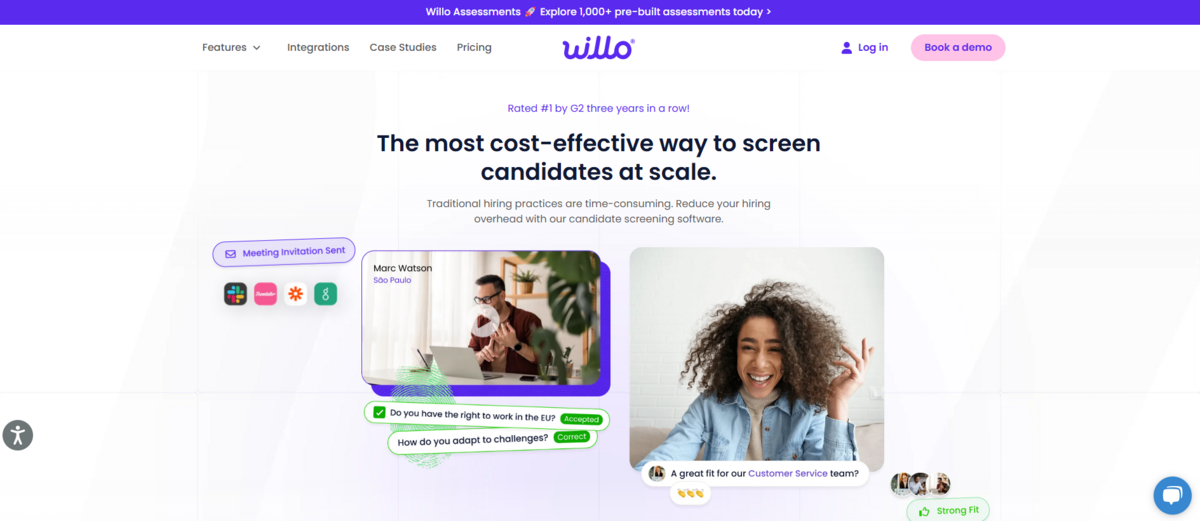
Willo emphasizes visual appeal and user experience, making it popular among companies where employer branding plays a significant role in recruitment success.
Key Features:
- Starting at $249/month with modern pricing tiers
- Intuitive, aesthetically pleasing interface design
- Branded candidate experience options
- Standard integration capabilities with common HR tools
- Mobile-optimized platform for candidate accessibility
- Team collaboration features for hiring decision-making
Ratings
Integration Level
Standard automation platform connectivity, basic ATS integrations, focus on user experience over extensive connectivity.
Best Use Case For
Creative agencies, design firms, and companies prioritizing aesthetic presentation and brand consistency in recruitment.
4. HireVue - Enterprise Assessment Platform for Modern Hiring
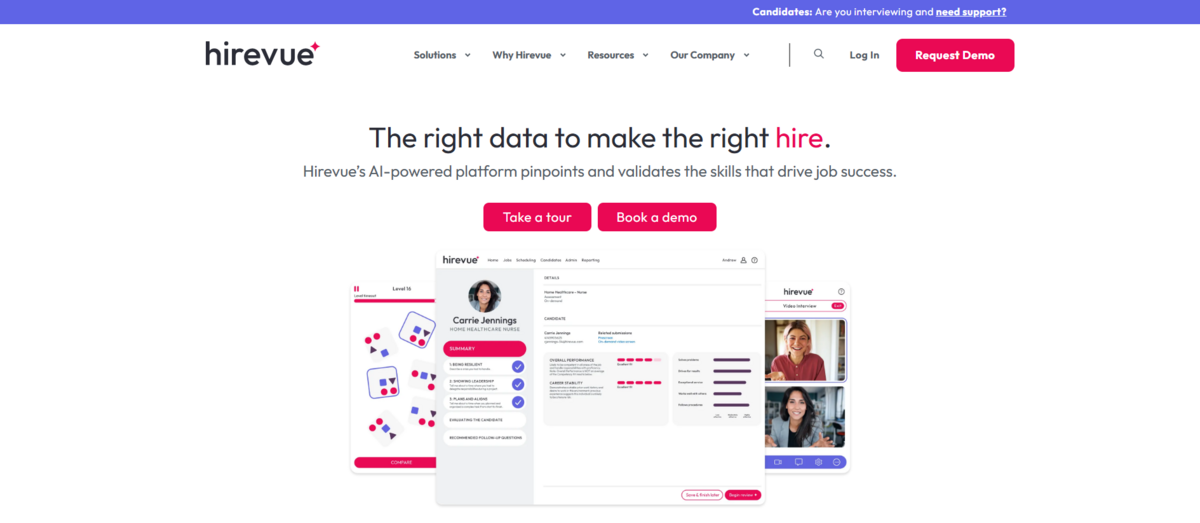
HireVue serves large enterprises requiring advanced AI-powered assessment capabilities and extensive customization options for complex hiring processes.
Key Features
- Custom enterprise pricing typically starting at $35,000+ annually
- Advanced AI assessment algorithms with predictive capabilities
- Enterprise-grade security and compliance meeting strict requirements
- Comprehensive analytics and reporting with advanced insights
- Dedicated implementation support and account management
- Extensive customization options for complex organizational needs
Integration Strategy
Enterprise-focused integrations, custom API development, dedicated implementation teams for complex connectivity requirements.
Software Review and Ratings
Best For
Fortune 500 companies with substantial recruitment budgets, complex assessment requirements, and dedicated IT resources.
Platform Comparison Table
| Feature | Hirevire | Spark Hire | Willo | HireVue |
|---|---|---|---|---|
| Starting Price | $39/month | $299/month | $249/month | undisclosed |
| Zapier Integration | 5000+ apps | Basic | Standard | Enterprise |
| Response Formats | Video, Audio, Text, Files | Video focus | Video, Text | Video, AI assessment |
| Candidate Login | Not required | Required | Required | Required |
| Language Support | 90+ languages | English focus | Limited | Multiple |
| Setup Time | Hours | Days-Weeks | Days | Months |
| Mobile Optimized | ✅ Full support | ✅ Standard | ✅ Good | ✅ Enterprise |
| Custom Branding | ✅ Complete | ✅ Limited | ✅ Good | ✅ Enterprise |
| Webhook Support | ✅ Yes | ⚠️ Limited | ⚠️ Basic | ✅ Advanced |
| API Access | ✅ Available | ✅ Available | ⚠️ Limited | ✅ Enterprise |
| Best For | SMBs, Quick Setup | Mid-Large Orgs | Creative Teams | Fortune 500 |
Decision Framework: Matching Platforms to Organizational Needs
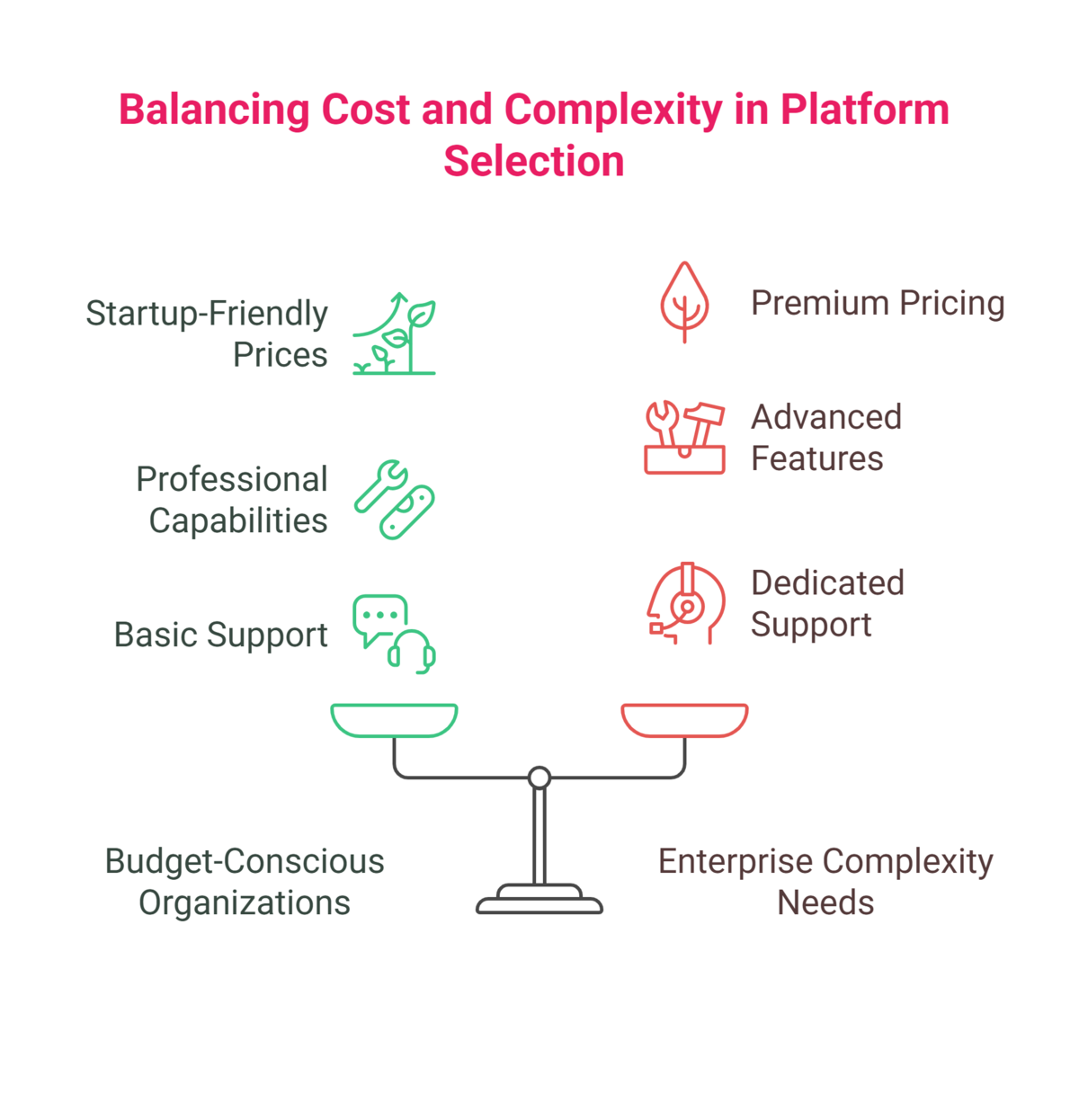
1. Budget-Conscious Organizations
Entry-level solutions provide professional capabilities without premium pricing. Platforms like Hirevire make advanced recruitment technology accessible to growing companies by offering enterprise-level features at startup-friendly prices.
2. Integration-Heavy Environments
Organizations using multiple HR tools benefit from platforms offering extensive connectivity options. Comprehensive integration ecosystems often prove decisive for companies with complex technology stacks requiring seamless data flow between systems.
3. Rapid Deployment Requirements
Companies needing immediate implementation should prioritize solutions with streamlined setup processes. Platforms enabling same-day deployment provide significant competitive advantages, especially during high-volume hiring periods.
4. Enterprise Complexity Needs
Large organizations with complex assessment requirements may justify premium pricing for advanced features, dedicated support, and extensive customization capabilities that align with sophisticated hiring processes.
Implementation and Integration Considerations
Setup Complexity Analysis:
- Quick implementation (hours): Plug-and-play solutions with pre-configured workflows
- Moderate setup (days): Standard platforms requiring basic configuration
- Complex deployment (weeks to months): Enterprise solutions with extensive customization
Candidate Experience Impact:
- No login required: Higher completion rates, better candidate experience
- Account required: Standard industry practice, moderate friction
- Complex registration: Enterprise-focused, potential candidate drop-off
Scalability and Growth:
- Flexible pricing models that accommodate hiring volume changes
- Integration capabilities that support evolving technology stacks
- Feature sets that grow with organizational complexity
Making the Optimal Choice
The automated interview software market increasingly emphasizes integration capabilities and user experience over pure feature quantity. Organizations achieve better ROI by selecting platforms that enhance existing workflows rather than requiring complete process overhauls.
Critical success factors include:
- Seamless integration with current HR technology stack
- Intuitive user experience for both recruiters and candidates
- Scalable pricing models that align with growth trajectories
- Reliable customer support and comprehensive documentation
- Future-proof architecture supporting evolving business requirements
The optimal platform choice ultimately depends on balancing feature requirements, budget constraints, integration complexity, and implementation timelines specific to each organization's unique circumstances. Companies prioritizing connectivity, ease of use, and cost-effectiveness typically find greater long-term value than those focusing solely on feature breadth or brand recognition.
ROI and Success Metrics
Measuring the impact of automated interview software requires tracking both quantitative metrics and qualitative improvements. Organizations that establish baseline measurements before implementation can demonstrate clear ROI and justify continued investment in recruitment technology.
Time Savings Quantification
- Screening Efficiency Gains Traditional phone screens average 30 minutes per candidate, while reviewing automated interview responses typically takes 8-12 minutes. For organizations screening 50 candidates monthly, this represents approximately 15 hours saved per month, or 180 hours annually.
- Scheduling Elimination Automated interviews eliminate coordination time for initial screenings. HR teams report saving 2-3 hours weekly on scheduling activities, freeing capacity for higher-value recruitment tasks like relationship building and strategic planning.
Cost-Per-Hire Improvements
- Direct Cost Reductions Organizations implementing automated interview software report average cost-per-hire reductions of 25-35%. Primary savings come from reduced time investment, fewer interview rounds needed, and improved candidate quality leading to better hiring decisions.
- Hidden Cost Benefits Reduced hiring manager time commitment, fewer rescheduled interviews due to no-shows, and decreased administrative overhead contribute additional savings that often exceed direct platform costs.
Quality of Hire Metrics
- Improved Assessment Consistency Standardized question sets and consistent evaluation criteria lead to more objective candidate assessment. Organizations report 40% improvement in new hire performance ratings when using structured automated interviews compared to unstructured phone screens.
- Better Candidate Experience Scores Candidates appreciate flexibility and professional presentation of automated interviews. Companies track Net Promoter Scores (NPS) for recruitment experience, with automated interview users typically scoring 15-20 points higher than traditional phone screen processes.
Team Productivity Gains
- Recruiter Efficiency HR teams can review more candidates in less time while maintaining assessment quality. Most organizations see 50-70% increase in candidates evaluated per week without adding staff.
- Hiring Manager Engagement Video responses provide better candidate insights than resumes alone, leading to more informed interview decisions and higher-quality final round meetings.
Implementation Success Indicators
Adoption Metrics
- Platform usage rates above 80% within 30 days
- Candidate completion rates exceeding 75%
- Positive feedback from hiring managers and candidates
Process Improvements
- Reduced time-to-hire by 20-30%
- Increased interview-to-offer conversion rates
- Decreased early-stage candidate drop-off
Long-term Value Realization Organizations achieving the best ROI focus on workflow optimization, team training, and continuous process refinement rather than simply implementing technology without strategic planning.
Common Challenges and Solutions
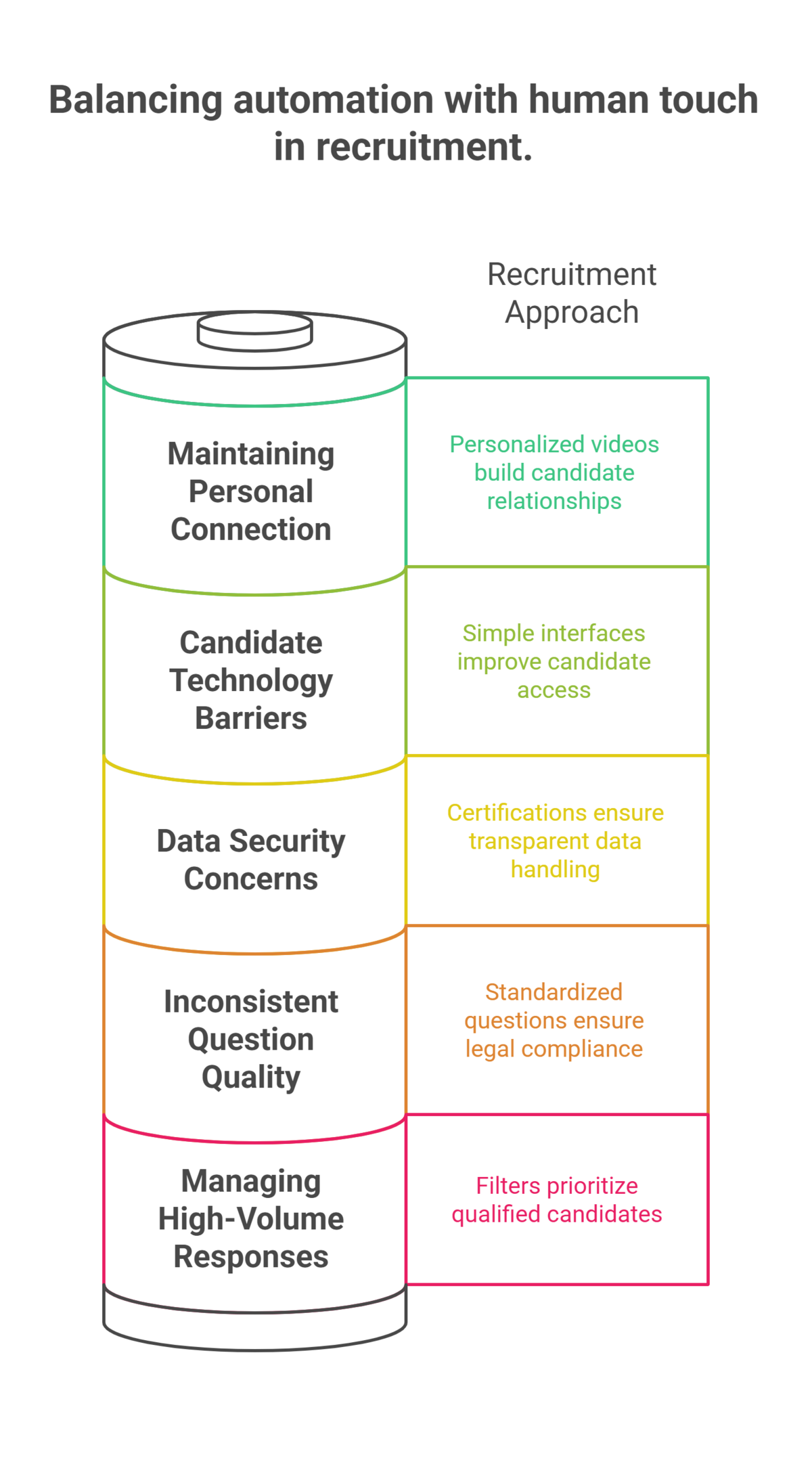
Organizations implementing automated interview software often encounter predictable obstacles during deployment and adoption. Understanding these challenges and proven solutions helps teams navigate implementation more effectively and achieve better outcomes.
Integration Complexity
Challenge: Connecting automated interview platforms with existing HR systems can seem overwhelming, especially for organizations using multiple tools or legacy systems.
Solution: Start with the most critical integration first, typically your ATS or primary communication tool. Use platforms offering pre-built connectors and templates rather than custom API development. Most modern solutions provide step-by-step integration guides and support resources.
User Adoption Resistance
Challenge: Team members may resist changing established recruitment processes, preferring familiar phone screens or in-person interviews.
Solution: Involve skeptical team members in platform selection and pilot testing. Demonstrate time savings with real examples from early adopters. Focus on how the technology enhances rather than replaces human judgment in hiring decisions.
Candidate Technology Barriers
Challenge: Some candidates may struggle with video recording technology or lack access to suitable devices for completing automated interviews.
Solution: Provide clear technical requirements upfront and offer alternative submission methods when possible. Choose platforms with simple, browser-based interfaces that work across devices without requiring software downloads. Include technical support contact information in all candidate communications.
Data Security Concerns
Challenge: Organizations worry about candidate data privacy, video storage security, and compliance with regulations like GDPR.
Solution: Select vendors with established security certifications and transparent data handling policies. Review data retention settings and ensure deletion schedules align with organizational policies. Document compliance measures for audit purposes.
Inconsistent Question Quality
Challenge: Teams may create poor interview questions that don't effectively assess candidate qualifications or may ask legally problematic questions.
Solution: Develop standardized question libraries for different roles and review them with legal counsel. Use platforms offering pre-built question sets and provide training on effective video interview question design.
Managing High-Volume Responses
Challenge: Automated interviews can generate large volumes of candidate responses that become overwhelming to review systematically.
Solution: Establish clear evaluation criteria and rubrics before launching. Use platforms with rating systems and collaborative review features. Consider implementing initial screening filters to prioritize responses from most qualified candidates.
Maintaining Personal Connection
Challenge: Automated interviews may feel impersonal, potentially damaging candidate experience and employer brand.
Solution: Include personalized introduction videos from hiring managers. Send follow-up communications acknowledging receipt of responses. Use automated interviews as one step in a broader, relationship-focused recruitment process rather than the sole candidate interaction.
Key Takeaways for Hiring Success
The automated interview software landscape offers compelling opportunities for organizations seeking to modernize their recruitment processes without abandoning proven workflows. As demonstrated throughout this analysis, the most successful implementations prioritize integration capabilities and user experience over feature complexity.
Key Takeaways for Decision-Makers
Integration determines long-term success. Platforms that seamlessly connect with existing HR systems deliver significantly better ROI than those requiring extensive workflow changes. Organizations benefit most from solutions offering multiple connectivity options including automation platforms, native ATS integrations, and flexible webhook support.
Cost-effectiveness varies dramatically. The market spans from accessible $19/month solutions to enterprise platforms requiring substantial annual investments. Most growing organizations find optimal value in platforms balancing comprehensive features with straightforward implementation.
Implementation approach matters. Organizations achieving the best outcomes focus on systematic planning, stakeholder alignment, and gradual adoption rather than rushing deployment. Success depends more on strategic execution than platform selection alone.
Making Your Decision
Evaluate your specific needs before comparing features. Consider your current technology stack, integration requirements, team technical expertise, and timeline constraints. The best platform for your organization aligns with these practical realities rather than offering the most extensive feature list.
Prioritize platforms that enhance rather than replace existing workflows. Solutions requiring minimal training and configuration typically achieve higher adoption rates and better long-term satisfaction.
The future of recruitment technology favors platforms that eliminate complexity while expanding capabilities. Organizations choosing solutions based on integration depth, cost-effectiveness, and implementation simplicity position themselves for sustained competitive advantage in talent acquisition.
Start with a pilot program to validate platform choice before full deployment, ensuring the selected solution delivers promised benefits within your unique organizational context.
FAQs (Frequently Asked Questions)
Q: Which automated interview software offers the easiest integration with existing HR systems?
A: Hirevire leads in seamless connectivity, offering over 5,000 integrations through Zapier, Make, and native ATS partnerships like Ashby and Recruitee. Its plug-and-play setup with pre-built templates allows teams to automate workflows without coding. Businesses can use Hirevire’s webhooks and APIs to connect CRMs, Slack, and HRIS, making implementation effortless. This deep integration ensures data flows naturally between systems, eliminating manual updates.
Q: How quickly can automated interview software be implemented?
A: With Hirevire, most teams can be fully operational within a few hours, thanks to its instant setup and user-friendly onboarding. Unlike enterprise solutions that take weeks, Hirevire requires no technical support or workflow overhaul. Recruiters can start screening candidates the same day they integrate it with their ATS or Sheets. Its quick adoption rate makes it perfect for small-to-mid-sized teams seeking immediate productivity gains.
Q: What’s the typical cost difference between automated interview software options?
A: Automated interview solutions range from $39/month for entry-level tools to over $35,000 annually for complex enterprise suites. Hirevire strikes a balance by offering advanced features—including multi-format responses, analytics, and integrations—starting at just $39/month. Its transparent, no-contract pricing allows businesses to scale affordably. Compared to legacy systems, Hirevire provides unmatched value with enterprise-grade capabilities at SME-friendly costs.
Q: Do candidates prefer automated interviews over traditional phone screens?
A: Absolutely. Studies show that about 80% of candidates prefer completing interviews on their schedule, and Hirevire enhances this experience with no-login access and mobile optimization. Its user-friendly interface lets candidates record video, audio, or written responses anytime. This flexibility improves response quality and completion rates, helping brands make a stronger impression while reducing administrative delays.
Q: Can automated interview software handle high-volume hiring?
A: Yes, especially when powered by Hirevire’s automation-first architecture. Its bulk invitation tools, Zapier and Make workflows, and auto-sync features allow recruiters to process hundreds of candidates effortlessly. Hirevire’s scalable infrastructure ensures consistent performance even during recruitment surges. Whether hiring globally or across multiple departments, businesses can rely on Hirevire to maintain speed, consistency, and quality in every hiring cycle.
